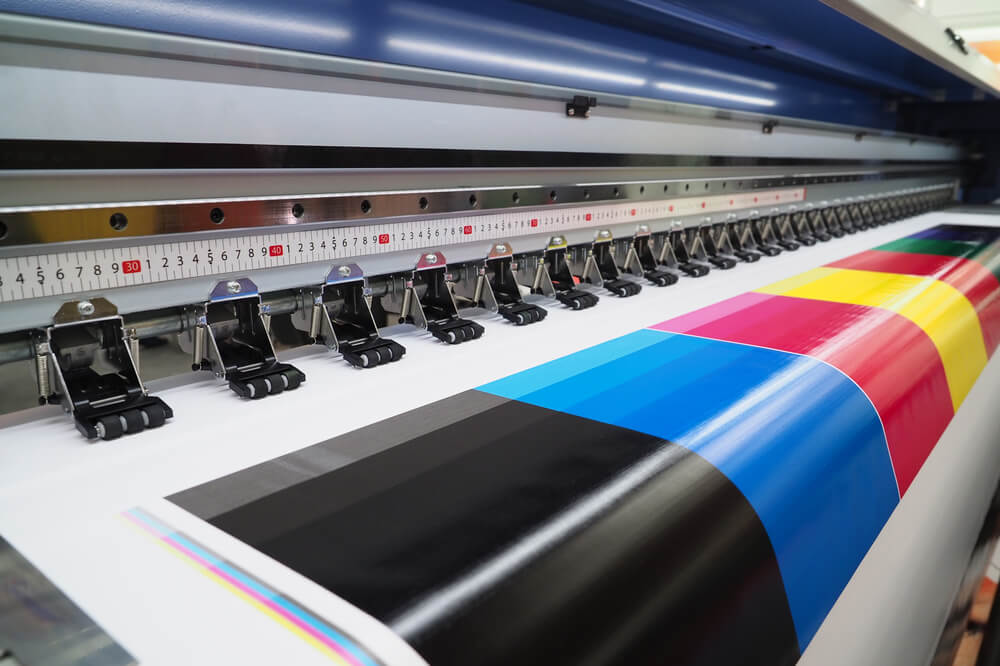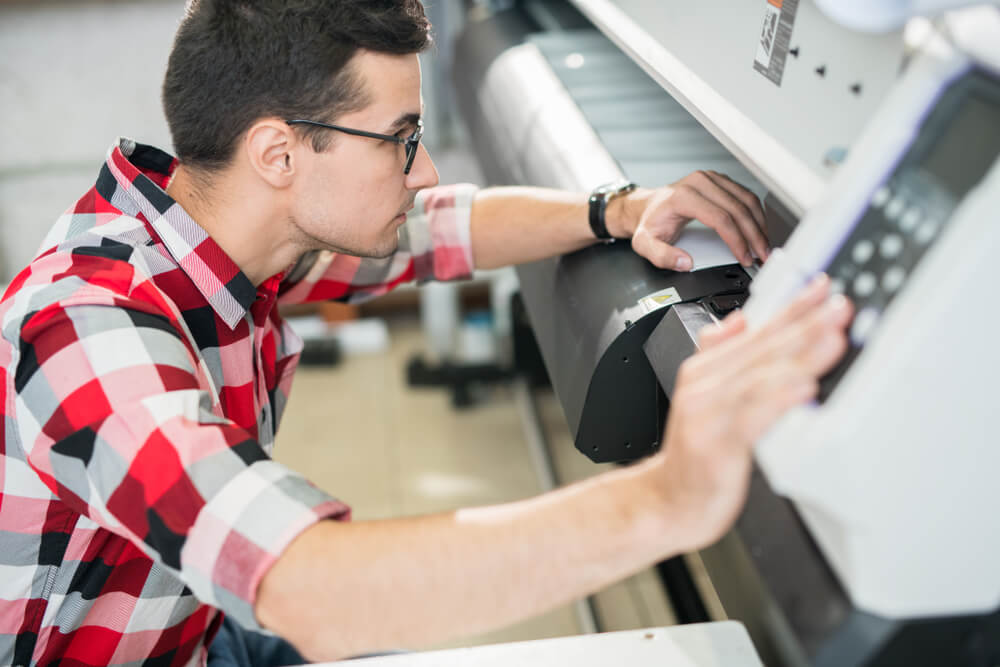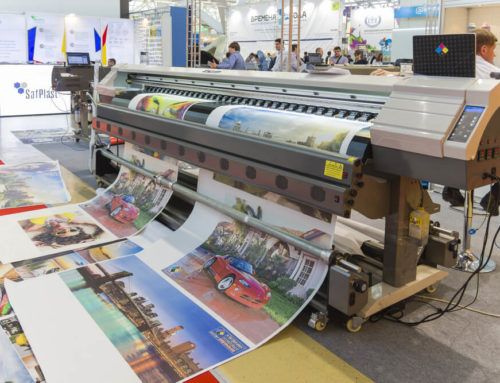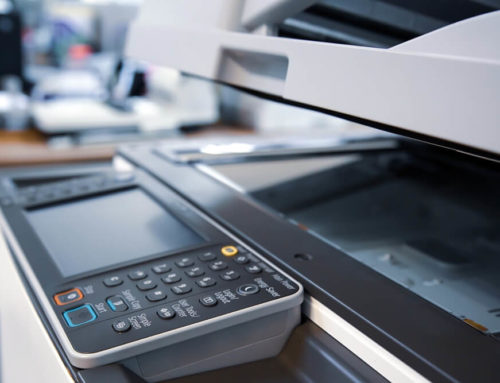Large blueprints and drawings are typical in the construction, engineering and architecture industries. The technology in wide format printing optimizes efficiency with a variety of features.
These architectural printers meet the demand for fast, accurate needs. But how do you decide, of the many models, which is the best wide format printer for architecture and engineering? Let’s find out.
Engineering Printing
The onset of digital production hasn’t just made printing important, it’s simplified production. Thankfully, engineering printers offer an exacting degree of consistency and precision that no longer requires runs back and forth to shops or awaiting approvals.
Using new tech in wide format printers alongside collaborative software offers real-time connectivity. Your prints get to site managers, investors, architects and other parties fast. Engineers get feedback or approval in no time. Wide format printers streamline the process, making them essential to engineering office supplies.
Architecture Supplies
The wide format printer has become a cost-effective solution. It meets daily architectural needs. These architectural printers reduce costs, especially in terms of ink usage and power consumption.
In the field of architecture supplies, you’ll find the wide format printer’s contribution to a smooth operation invaluable. You get increased productivity and reduced negative impact on the project.
Greater Print Efficiency and Reduced Waste

Engineering, construction and architectural printers have greatly minimized the procedures once required to get a print up and out the door. These printers reduce costs, especially in terms of ink usage and power consumption.
Print workflow has improved with the capacity to efficiently capture markups and implement changes. And it does this while noticeably reducing the effort to get it done.
Wide format printers improve collaboration between teams. Integrated with the right software, the creation, review, edit and approval life cycles are greatly sped up.
Considerations for Wide Format Printers
Tabloid Sized Printing
Once upon a day, architects and engineers were dependent on third parties like Kinko’s and FedEx for their large format documents. Technology has put the ability to produce large prints from office desks.
Thanks to the technology, engineering printers no longer needs to rely on third-parties or patchwork tiling to produce big sheets. Architects no longer have to compress or shrink complex blueprints. Wide format printers have become essential architecture supplies, capable of producing huge drawings without compromising quality or ballooning budgets.
Paper Handling
Oversized printing may be an option for a wide format printer, but not all do this on an even level. There’s the architectural printer that manages occasional use and printers that easily churn them out. One model may require a single sheet at a time feeding with a bypass slot. Others might have a tray designed for wide stock. It’s a good idea to have a printer ready to meet your professional needs. Otherwise, you end up babysitting operations.
Automatic Document Feed
Not all engineering printers have an ADF (automatic document feeder). Scanning may not be a priority for your operations, but the best print models are all-in-one solutions. It might be a good idea to consider that when purchasing one for your engineering office supplies. You never know when you might need to scan a wide print to discover your printer only manages letter or legal paper scans.
Connectivity
While you can certainly find architectural printers for your desk, many models have the capacity to take up big space, meaning they may not be conveniently located. Built-in Wi-Fi would be a great benefit. You won’t have to worry about USB, Ethernet or other services to print as you wish. Professionals will be able to print remotely. The flexibility will be invaluable.
Other options include near-field communications, a hotspot for wireless tap-to-connect printing for smart devices. The investment in a wide format printer can also include flashcards, USB ports, and flash and external hard drives.
Cost of Ink Per Page
Ink schemes impact the costs of your print productions. Wide format prints on oversized stock can drain ink quickly. Quantifying your ink-per-page expense means dividing cartridge costs versus estimated page yield. This will help you choose a printer.
Say a single cartridge yields 1,000 pages, and that cartridge costs $50. You could say roughly the production costs you five cents on each page. Now, divide the cost of paper by the number of sheets. Finally, add that cost to the cost of toner or ink. For color, you have to this for cartridges, adding up totals.
Best Wide Format Printers
Regardless of whether you’re producing a tabloid-sized blueprint or putting together a full-colored PowerPoint presentation on legal paper, the following printers promise stellar results quickly and effectively.
Brother MFC-J6945DW INKvestment Tank Color Inkjet All-In-One Printer
The Brother INKvestment Inkjet is an all-in-one solution with a ton of features. There are three paper trays and an internal ink storage tank.
Pros
- Quality printing for engineering, construction and architecture
- Reduced running costs
- Prints, scans, copies and faxes multi-sized pages
- Duplexing ADF on a single pass
- Three paper input sources
Cons
- No super-tabloid support; the feature would provide greater value
Canon Pixma TS9520 Wireless Inkjet All-In-One Printer
Many professionals in the building industry operate from home. The Canon Pixma is an excellent at-home solution. It comes with impressive features, connectivity and excellent output.
Pros
- Exceptional and quality output
- Prints tabloid-size and borderless square media
- Two 100-sheet paper input trays
- Smart ITFFF enabled
- Robust connectivity
Cons
- Lacks Wi-Fi Direct and NFC
- No auto two-sided scanning
Epson Expression Photo HD XP-15000 Wide-Format Inkjet Printer
The Epson Wide-Format Inkjet has a quality output comparable with more expensive pro models. It’s a compact solution, creating large prints but manages to be small enough to fit on a desk.
Pros
- Impressive photo quality compared to comparable engineering printers
- Borderless images printed from 4×6 inches to 13×19 inches
- Uses Claria Photo HD inks
- Light and small for a large-scale printer
Cons
- Running costs can be a bit high
- Print speeds slower compared to comparable architecture printers
HP LaserJet Pro M15w
One of the most affordable options on our list, the HP LaserJet Pro has a dpi print resolution of 600×600. While able to manage large prints, its size makes it easy for on-site printing or space-saving in a small office.
Pros
- Small footprint
- Inexpensive
- Smartphone integration
- Solid overall print quality
Cons
- High expenses
- No Ethernet port
- Low price makes this one hard to find
Brother MFC-J5330DW
The Brother MFC-J5330DW engineering is ideal for low-volume, wide format printing. It has wireless connectivity and auto-duplex printing.

Pros
- Competitively fast
- Overall good print quality
- Prints tabloid-size
- Options for multiple connectivity
- Strong software bundle
Cons
- Graphics not as sharp as comparable models
- Cost per page should be lower
- Non-duplexing auto doc feeder
Epson WorkForce Pro WF-7840 Wireless Wide-Format All-in-One Printer
The WorkForce Pro is a multi-functional, wide format printer with a batch of productivity features. It is a reliable choice for heavy workloads and reduced downtime.
Pros
- Excellent PrecisionCore output
- Borderless tabloid and super tabloid and printing
- Thumb drive support
- Large paper drawers and input tray
- Inexpensive
Cons
- Significant per page cost
Final Thoughts
Frontier Business Products is ready to help every engineer, architect and construction professional maximize their efficiency and productivity with seamless printing. We’d love to hear from you about the above guidelines and if you have any questions about how to use wide format printing. Contact us today to schedule a free consultation with a solution specialist.





